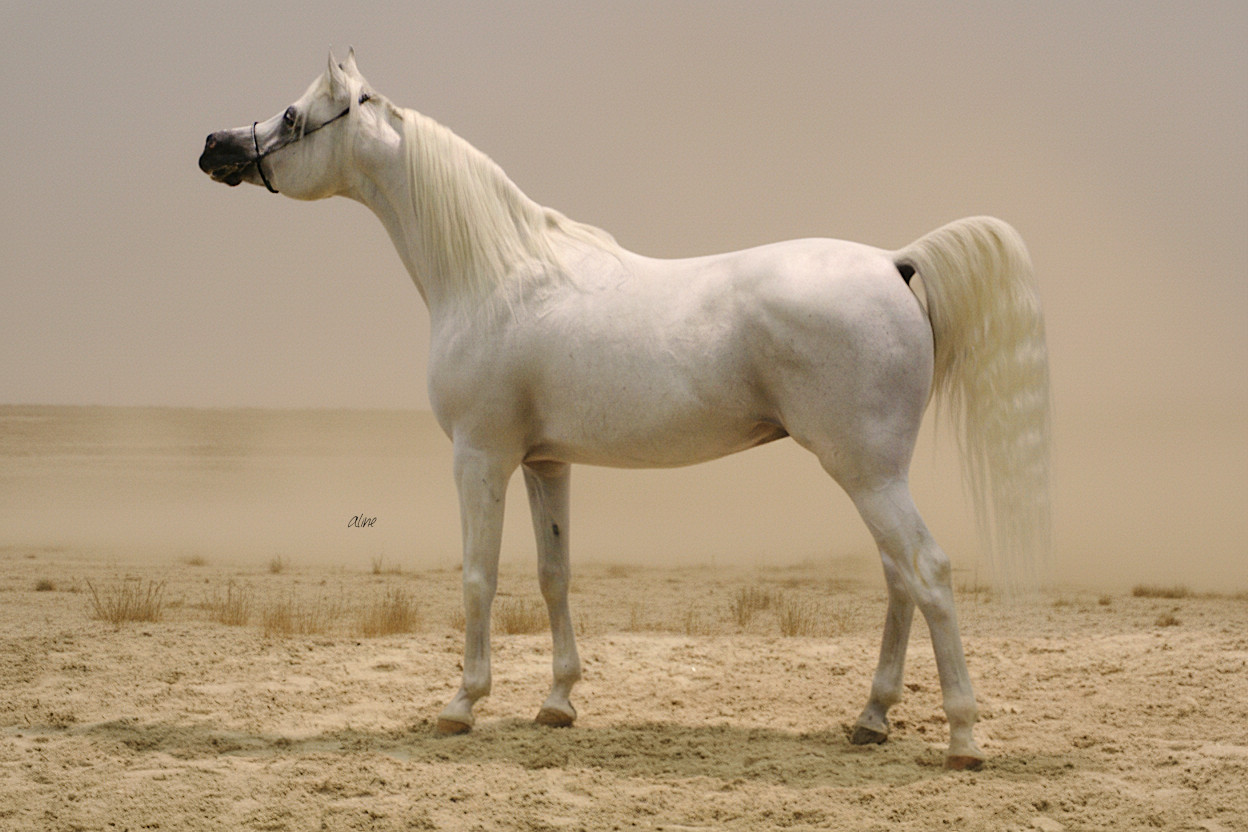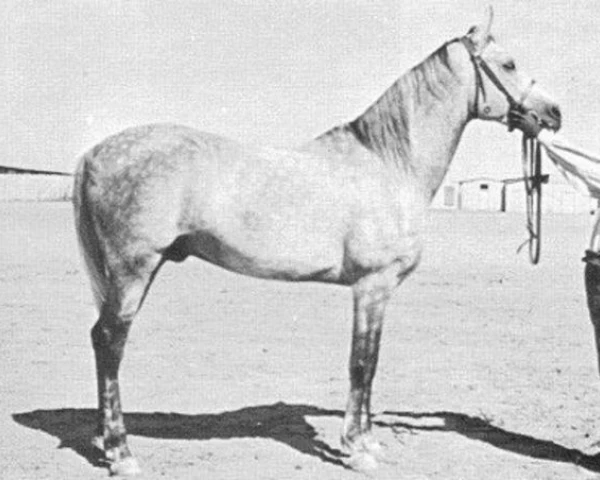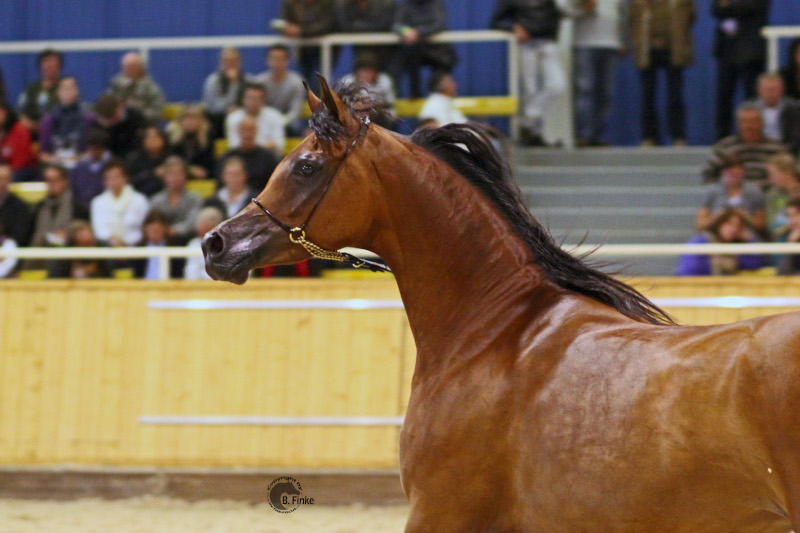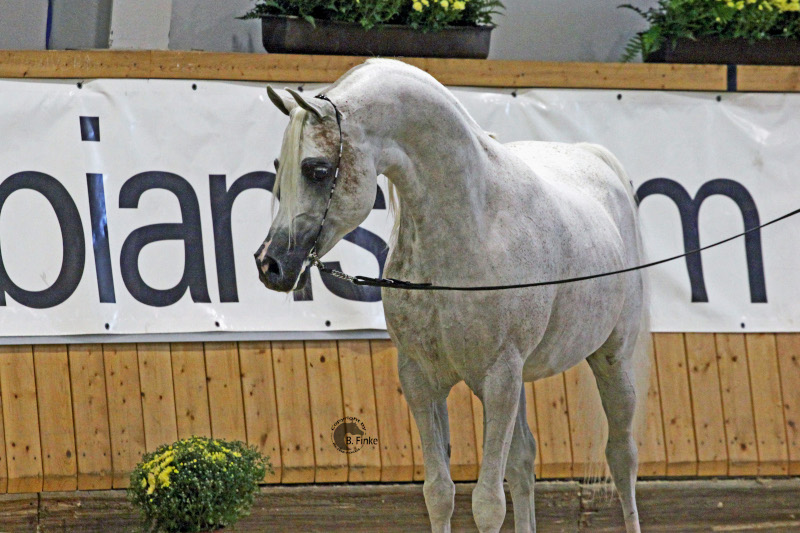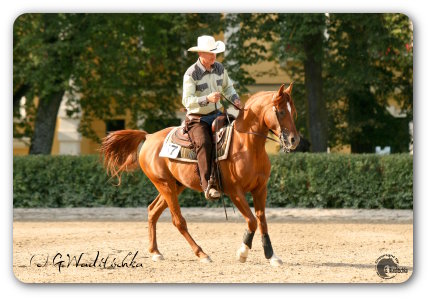Gazella II 
![]()
Gazella II was a bay mare foaled in 1914 at the Jezupol stud of Count Wladyslaw Dzieduszycki. She was sired by Kohejlan (1903) and out of Abra by Anvil. Although of small scale, Jezupol was one of the most valuable studs in Galicia between 1885 and 1914, preserving the bloodlines of three remarkable foundation mares imported by Juliusz Dzieduszycki. By 1909, the stud counted twelve purebred Arabian mares of the highest class, yet in 1914 almost all were seized by Russian troops. Only a few young fillies survived the turmoil of war, among them Gazella II, Mlecha, and Zulejma, alongside the mare Pomponia (1902).
In 1919, Henryk Przewlocki of the Mordy Estate purchased Gazella II from Jezupol, who was then in foal to Mazepa I (1910). Only one year later, Gazella II - along with other mares - was transferred to Janów Podlaski, where she became one of the most significant foundation mares. She was a fertile broodmare producing four stallions and eight mares of which the following should be mentioned here:
Her first foal, the grey stallion Kohejl Ibn Mazepa (1920, by Mazepa I), was bred while Gazella II was still at Mordy Estate. This stallion served at Niskolyzy between 1928 and 1934, leaving valuable progeny such as Adamas (1930) and Bankrut (1931), known for their riding qualities and strength.
Elegantka (1923, by Bakszysz) was Gazella II’s first truly outstanding daughter. Retained at Janów, she became one of the most important broodmares of her generation, founding her own female family that continues to this day. Elegantka was the dam of Lowelas (a sire at Trakehnen) and Wielki Szlem, one of the four famous Ofir sons, and later influential sire in Poland.
Fryga II (1924, by Bakszysz), another daughter bred at Janów, produced the mare Maskota who was grand dam of the Polish stallion Pilot who was transferred to the United States in 1945 as spoils of war. Taken to Russia in 1939, Fryga II gave birth to Ofirka by Ofir, her most notable daughter.
Another son of Gazella II was Hardy (1926, by Ganges I). A correct but somewhat plain stallion, Hardy was standing at Janów from 1931 to 1935, chiefly to produce strong colts for the half-bred program. His progeny proved hardy and effective riding horses, and he was taken to Russia in 1939.
Jaskólka II (1928, by Koheilan I) was another influential Janów-bred daughter. She was remembered for producing Wilga (1938, by Ofir), who was dam Arwila (1947) and Carmen (1942).
Gazella II's daughter Makata (1931, by Fetysz) secured her place in history as the dam of the legendary Witraz (1938, by Ofir). Through Witraz, Makata contributed decisively to the modern Polish Arabian: he was the sire of Bask, the 'Polish Queen' Bandola and many other important horses. Although Makata herself was lost during the Second World War, her legacy endures through her son Witraz.
Najada (1932, by Fetysz) proved as another daughter of influence. She produced Ali Said (by Ofir) in 1940. Najada was transferred to Nowy Dwor in 1952 where she produced five foals, among them the mare Naganka by Bad Afas who became foundation mare at Sheila Varian's stud in the U.S..
The youngest and perhaps the most famous of Gazella II’s daughters was Taraszcza (1937, by Enwer Bey). After the war she was taken to Tersk Stud in Russia, where she produced Negatiw (1945, by Naseem), a stallion of great influence. Other of her offspring were Nitochka (dam of Neptun, Naslednik, Naplyv or Napersnitsa), Teplitsa (dam of Trel or Teberda) and Patent.
Contemporary accounts stress the paradox of her influence: While she was an superb broodmare producing excellent foals, she was not considered beautiful. Wladyslaw Pruski described Gazella II as a plain and unattractive bay mare, marked by high stockings on all four legs, sharp outlines, a sloping roof-shaped croup, sickle hocks, and soft pasterns. She lacked the nobility usually associated with refined Arabian type.
Although Gazella II left several sons, her greatest significance lies in the extraordinary broodmares she produced. Among them, Elegantka, Najada, and Taraszcza each founded their own mare families, all of which continue the legacy of Gazella II till today.
Info
| bay mare | |
| foaled: 1914-00-00 | died: n/a |
| sire: KOHEJLAN | sireline: Hami db (via Kohejlan) |
| dam: ABRA | damline: Gazella db (branch: Abra) |
| strain: Koheylah Adjuze | |
| additional information: 14.hh; to Russia in 1939; She came to Janów with the stallion Kohejl-Ibn-Mazepa, 1920 (by Mazepa I), who was used for breeding. Gazella II produced at Janów four stallions and eight outstanding mares (led by the remarkable Elegantka, 1922). In 1939, she was exported to the USSR; Gazella II was a striking example of how careful one must be in elite breeding when evaluating and discarding mares due to faults in conformation and external appearance. She was an unassuming and unattractive bay mare, with high stockings on all four legs, sharp lines, a sloping, roof-like croup, sickle-shaped hind legs, and soft pasterns. She had neither the beauty nor the nobility typical of Arabian horses and was decidedly devoid of ‘presence.’ She revealed only great femininity in her structure. Despite this, she proved to be an extraordinarily valuable broodmare who created her own era at Janów. [W. Pruski] | |
| Breeder: Count Dzieduszycki Jezupol Stud Poland | |


